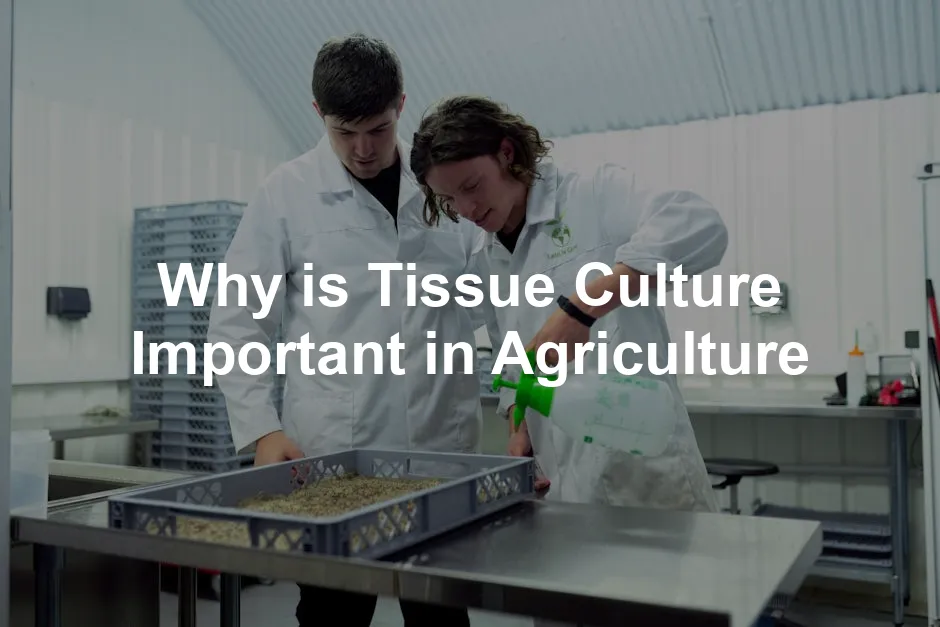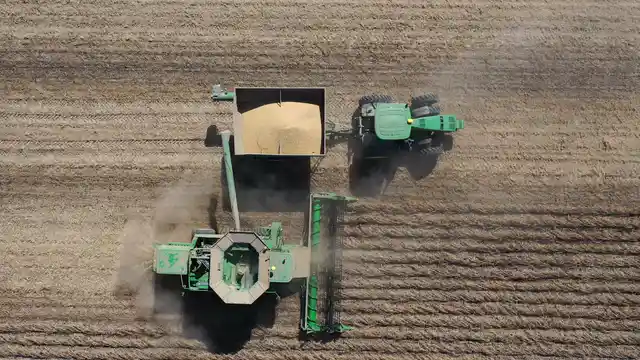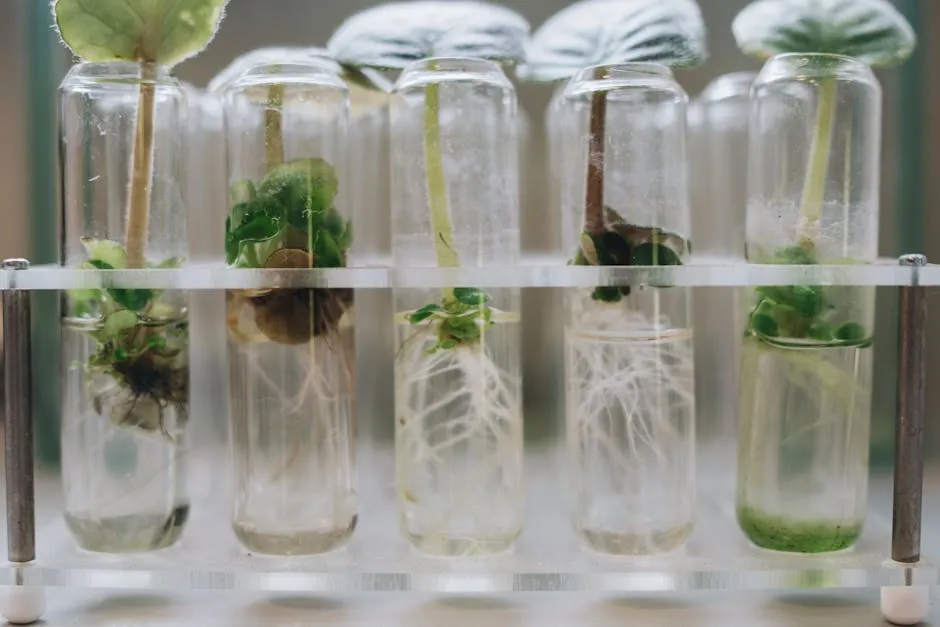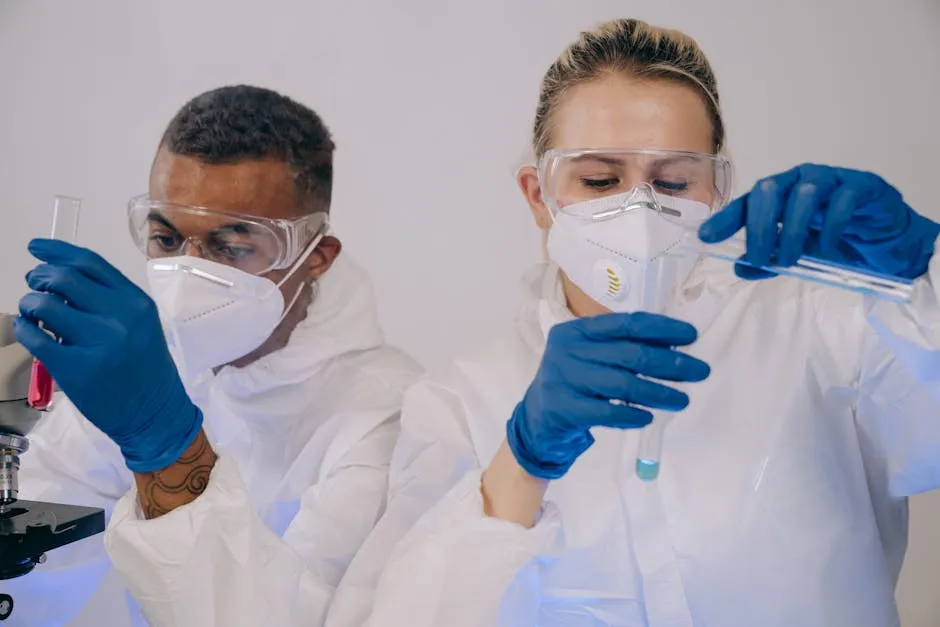
Why is Tissue Culture Important in Agriculture
Introduction
Tissue culture is a modern farming technique. It allows scientists to grow plants in a controlled environment. This method plays a key role in increasing crop production and ensuring sustainability. As a result, it helps meet the rising global food demand.
If you’re curious about diving deeper into tissue culture, check out Tissue Culture Techniques: An Overview. This book will give you a solid foundation and maybe even make you the next plant whisperer!
Summary and Overview
Tissue culture refers to growing plant cells or tissues in a sterile environment on nutrient media. This innovative technique emerged in the early 20th century, gaining momentum in the 1970s. It has become vital in agriculture due to its numerous benefits.
One major advantage is the ability to produce disease-free plants. This significantly boosts crop yields and quality. Additionally, tissue culture enables rapid multiplication of plants, ensuring uniformity and consistency. As climate change and population growth create new agricultural challenges, the demand for tissue culture solutions continues to rise.
Farmers increasingly rely on this technique for developing resilient and high-yield crop varieties. Moreover, it ensures the preservation of genetic diversity, safeguarding the future of food production.

To make your gardening easier and more efficient, consider investing in a Gardening Tools Set. With the right tools, you can turn any plant project into a walk in the park—literally!
The Fundamentals of Tissue Culture
What is Tissue Culture?
Tissue culture is the technique of growing plant cells, tissues, or organs in a controlled environment. The primary goal is to produce new plants from small samples, known as explants.
There are several types of tissue culture techniques. Micropropagation focuses on rapidly producing identical plantlets. Somatic embryogenesis involves forming embryos from somatic cells, leading to new plant development.
For tissue culture to succeed, aseptic conditions are crucial. This means maintaining a sterile environment to prevent contamination. Nutrient media, enriched with vitamins and minerals, provide essential nutrients for growth.
Through these techniques, tissue culture enhances agricultural productivity, making it a vital tool for modern farming.
Key Techniques in Tissue Culture
Tissue culture involves several key techniques that revolutionize plant propagation. Let’s explore some of the most significant methods.
Micropropagation is perhaps the most well-known technique. It allows rapid multiplication of plants from small tissue samples. This method results in numerous identical plantlets, ensuring uniformity. Farmers benefit from quicker production cycles and increased yield.

Protoplast culture focuses on plant cells without their cell walls. This technique enables the fusion of different plant cells, paving the way for hybrid varieties. It’s particularly useful in genetic engineering, helping to introduce desirable traits into crops.
Callus culture involves inducing a mass of undifferentiated cells, or callus, from plant tissues. This mass can later develop into complete plants. Callus culture is beneficial for plant breeding and genetic studies, allowing researchers to manipulate cell development.
Embryo culture is another important technique. It nurtures immature embryos in a controlled environment. This method helps overcome issues like embryo abortion, which can occur in some species. By using embryo culture, scientists can ensure the successful development of new plant varieties.
These techniques offer innovative ways to enhance crop production and improve agricultural practices, making tissue culture an essential tool in modern farming.
For those who want to get their hands dirty, a Seed Starter Kit is a fantastic investment. It’s perfect for anyone looking to grow their own plants from scratch, and the satisfaction of seeing them thrive is unbeatable!
Importance of Tissue Culture in Agriculture
Crop Improvement
Tissue culture plays a crucial role in enhancing crop quality. It helps create disease-resistant and high-yield varieties. Farmers can now cultivate crops that withstand pests and environmental stressors better than ever before.
For instance, sugarcane varieties developed through tissue culture show improved disease resistance. Similarly, bananas propagated via this technique yield more fruit while being less vulnerable to diseases. Such advancements are vital for meeting the growing food demands in a changing climate.

Tissue culture is essential in agriculture for enhancing crop quality and resilience. Learn more about its importance in agriculture.
Genetic Preservation
Another significant aspect of tissue culture is genetic preservation. It safeguards rare and endangered plant species from extinction. Through germplasm banks, scientists store genetic materials in controlled conditions.
Cryopreservation is a technique used to keep plant tissues viable for long periods. This method ensures that unique genetic traits remain available for future breeding efforts. By maintaining genetic diversity, tissue culture supports biodiversity and ecological balance.
These practices not only protect plant species but also ensure sustainable agricultural practices for generations to come.

For those looking to improve their gardening game, consider using a Organic Fertilizer. It’s like giving your plants a multivitamin—because who doesn’t want happy, healthy plants?
Year-Round Crop Production
Tissue culture technology allows farmers to grow crops all year. Traditionally, factors like climate and seasons limited agricultural output. However, tissue culture offers solutions by enabling controlled environment agriculture. This method creates ideal conditions for plant growth, regardless of external weather.
Farmers can utilize greenhouses or indoor farms to cultivate plants without seasonal constraints. Imagine harvesting fresh vegetables in winter or fruits in early spring! This consistent production helps stabilize farmers’ incomes.
Moreover, year-round crop production reduces food shortages. It ensures consumers have access to fresh produce at all times. Economic benefits also arise from reduced dependency on seasonal crops. Farmers can plan their planting and harvesting schedules, maximizing their land’s potential.

Speaking of maximizing potential, if you’re considering indoor gardening, a Hydroponic Growing System might be just what you need! It’s a soil-free way to grow your favorite plants and herbs right at home.
Economic Benefits of Tissue Culture
Using tissue culture comes with significant economic advantages for farmers. First, it leads to increased crop yields. Studies show that tissue-cultured crops can yield up to 30-50% more than conventionally grown varieties. This boost translates to higher profits for farmers.
Additionally, tissue culture reduces production costs. By utilizing disease-free planting materials, farmers can lower their reliance on pesticides. This not only cuts costs but also promotes a healthier ecosystem. In areas where labor is expensive, tissue culture can streamline operations, making it easier to manage large-scale crop production.
The initial investment in tissue culture may seem high, but the long-term savings and increased profitability make it worthwhile. Farmers who embrace this technology can enjoy sustainable growth and improved economic stability.

Market Access and Sustainability
Tissue culture improves market access, especially for smallholder farmers. By producing disease-free, high-quality plants, farmers can meet market demands more efficiently. Buyers often seek consistent quality, and tissue culture ensures uniformity in crops.
Moreover, the eco-friendly practices enabled by tissue culture contribute to sustainability. Farmers can cultivate crops without harmful pathogens, reducing the need for chemical treatments. This approach not only protects the environment but also enhances food safety.
Sustainability is crucial as consumers become more conscious of their food sources. Farmers who adopt tissue culture can market their products as organic or environmentally friendly. This strategy not only widens their customer base but also allows them to command higher prices.
In conclusion, tissue culture plays a pivotal role in enhancing market access and promoting sustainable agricultural practices. Farmers equipped with this technology can thrive in an increasingly competitive market while protecting our planet.
Challenges and Limitations of Tissue Culture
Technical and Financial Challenges
Adopting tissue culture in agriculture presents several hurdles. One of the primary barriers is the cost. Setting up a tissue culture lab can be expensive. This includes purchasing equipment, maintaining sterile conditions, and sourcing quality media. Such expenses can deter small-scale farmers.
Besides financial concerns, technical expertise is crucial. Farmers often require training to handle tissue culture techniques effectively. The need for skilled personnel adds another layer of complexity. Not every agricultural region has access to trained specialists, making it challenging to implement tissue culture practices widely.
Additionally, laboratory facilities must meet specific standards for successful tissue culture. These requirements can be daunting for farmers, especially in developing regions. Consequently, without proper resources and expertise, the full potential of tissue culture may remain untapped.

Ethical and Regulatory Concerns
Ethical dilemmas often arise in tissue culture practices, particularly regarding genetic modification. Some people worry about altering plant genetics, fearing unforeseen consequences. This concern can lead to public resistance against genetically modified organisms (GMOs) derived from tissue culture.
Regulations governing tissue culture vary by country. Compliance with these laws can be complex, often requiring extensive documentation and testing. These regulations aim to ensure safety but can also slow down research and innovation. Farmers may face delays in getting approval for new varieties.
Moreover, the ethical implications extend to biodiversity. Critics argue that focusing on a few genetically modified crops can threaten traditional, diverse farming practices. Balancing innovation and preservation of local varieties is essential to foster sustainable agriculture. Addressing these concerns thoughtfully will be key to the future of tissue culture in farming.
Future Directions in Tissue Culture Research
Innovations in Techniques and Applications
Recent advancements in tissue culture are exciting! Techniques like CRISPR and 3D culture systems are changing the landscape. CRISPR allows for precise genetic modifications, enhancing crop traits and resilience. This technology can lead to varieties that thrive in challenging environments.
3D culture systems mimic natural growth conditions. They provide a more realistic environment for plant development. This innovation can improve the quality of tissue-cultured plants, making them more robust.

Moreover, researchers are exploring new applications in climate-resilient agriculture. With increasing climate challenges, developing crops that withstand extreme conditions is vital. Innovations in tissue culture can help create varieties that resist drought, pests, and diseases.
The potential is vast! By pushing the boundaries of tissue culture techniques, we can pave the way for sustainable, productive agriculture in the future. As these technologies evolve, they promise to significantly impact food security and environmental sustainability.
Integration with Other Agricultural Practices
Tissue culture offers exciting possibilities for sustainable and organic farming. By producing disease-free plants, it reduces reliance on chemical pesticides. This aligns with the goals of organic farming, emphasizing environmental health and biodiversity.
Farmers can integrate tissue culture with traditional practices, enhancing crop quality without harmful inputs. Collaborative efforts between research institutions and farmers are crucial. These partnerships can lead to innovative approaches and shared knowledge. For example, local farmers can benefit from enhanced varieties developed in research labs.
Workshops and training sessions allow farmers to learn best practices. Such initiatives foster a community that values sustainable agriculture. Ultimately, integrating tissue culture with other practices can create resilient farming systems. This approach not only boosts productivity but also protects natural resources for future generations.
Conclusion
Tissue culture is vital in modern agriculture, offering numerous benefits. It enhances crop production by creating disease-resistant varieties and ensures food security. This technique also promotes sustainability by enabling year-round farming and reducing chemical usage.
The integration of tissue culture into traditional practices can foster resilience among farmers. As climate challenges increase, continued research and adoption of tissue culture techniques remain essential. By embracing this innovative approach, we can achieve a more sustainable future in agriculture.
If you’re looking to document your gardening journey, don’t forget to grab a Plant Care Journal. It’s a perfect way to track your plant’s progress and feel like a true plant parent!
Please let us know what you think about our content by leaving a comment down below!
Thank you for reading till here 🙂
All images from Pexels




